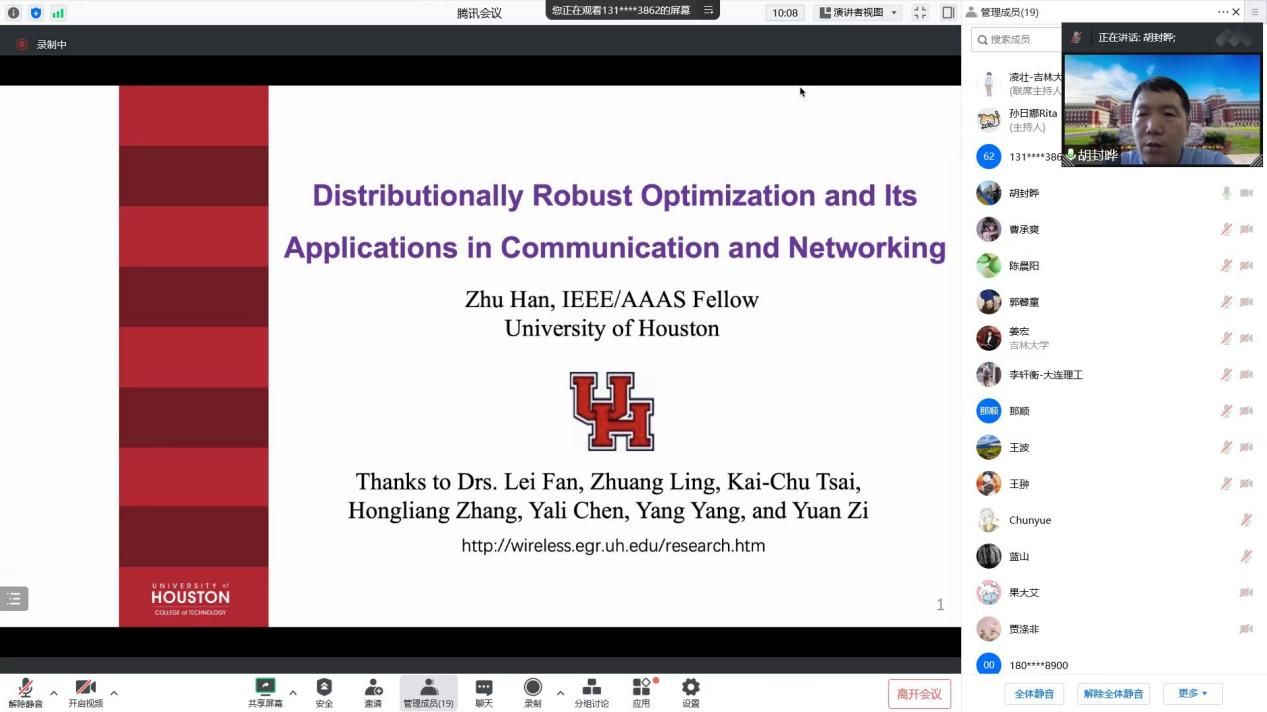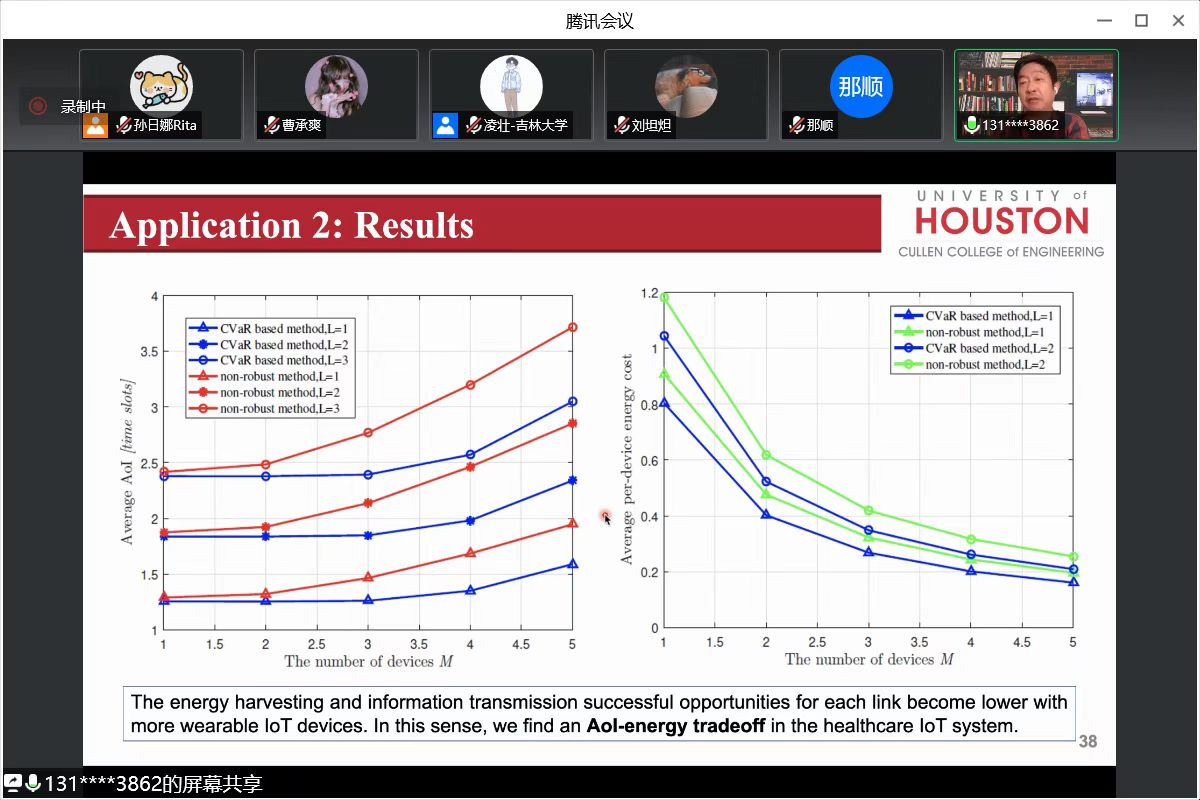At 9:00 am on August 8th, 2022, the fourth lecture of the lecture series on cutting-edge technologies in information communication and control was successfully held via Tencent platform. Professor Zhu Han of the University of Houston was invited to conduct an online academic exchange entitled “Distributionally Robust Optimization and Machine Learning for Communication Networks” with teachers and students of our College of Communications Engineering. The exchange session was chaired by Professor Fengye Hu.

At the beginning of the lecture, Professor Fengye Hu gave a detailed introduction to Professor Zhu Han’s academic background, work experience, research direction and honorary awards.
Then, Professor Han gave the lecture. Based on deterministic probability distribution and uncertain probability distribution, he introduced three common optimization methods: stochastic programming, robust optimization and distributed robust optimization. Furthermore, the characteristics, differences and connections of these three optimization methods were introduced, and the scenarios in which they are suitable for application were given. The role of the DRO method and the advantages of its application were summarized. On this basis, Professor Han shared the case studies of three types of DROs, including discrepancy-based DRO optimization, DRO methods using risk aversion and CVaR, and DRO methods based on reinforcement learning. Finally, he elaborated on the motivations for using the DRO approach and outlined the basic kernels of the DRO optimization method, CVaR and DRO RL method.
After the meeting, teachers and students actively raised questions and participated in discussions, and Professor Han patiently answered their questions one by one and supplemented relevant information. As the fourth in the lecture series on cutting-edge technologies in information communication and control, this lecture breaks through the boundaries of time and space, provides a platform for open communication between teachers and students from our college and experts and scholars from world-class universities, bringing cutting-edge information and hot topics in the field of wireless communication to our teachers and students. It will further promote the construction of “Double First-Class” disciplines of our college.


Attachment: Brief Introduction to Zhu Han
Zhu Han received the B.S. degree in electronic engineering from Tsinghua University, in 1997, and the M.S. and Ph.D. degrees in electrical engineering from the University of Maryland, College Park, in 1999 and 2003, respectively. From 2000 to 2002, he was an R&D Engineer of JDSU, Germantown, Maryland. From 2003 to 2006, he was a Research Associate at the University of Maryland. From 2006 to 2008, he was an assistant professor in Boise State University, Idaho. Currently, he is a John and Rebecca Moores Professor in Electrical and Computer Engineering Department as well as Computer Science Department at University of Houston, Texas. His research interests include security, wireless resource allocation and management, wireless communication and networking, game theory, and wireless multimedia. Dr. Han is an NSF CAREER award recipient of 2010. Dr. Han has several IEEE conference best paper awards, and winner of 2011 IEEE Fred W. Ellersick Prize, 2015 EURASIP Best Paper Award for the Journal on Advances in Signal Processing and 2016 IEEE Leonard G. Abraham Prize in the field of Communication Systems (Best Paper Award for IEEE Journal on Selected Areas on Communications). Dr. Han is the winner 2021 IEEE Kiyo Tomiyasu Award. He has been an IEEE fellow since 2014, AAAS fellow since 2020 and IEEE Distinguished Lecturer from 2015 to 2018. Dr. Han is a 1% highly cited researcher according to Web of Science since 2017.